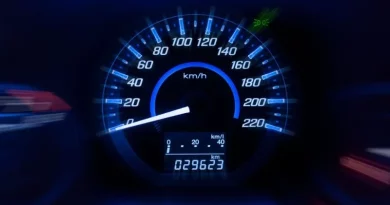How Self-Driving Vehicles Will Affect the Future of Auto Insurance
The concept of cars driving themselves was something you could only find in science fiction. However, with the advancements in modern technology, this futuristic idea is gradually becoming a reality. The presence of self-driving cars on the roads is steadily increasing, prompting discussions on how to insure them appropriately. It is a prospect that insurance companies never anticipated.
As technology progresses, the likelihood of fully autonomous cars running on major roadways also grows. While this innovation is exciting, it also raises several questions about the future of the auto insurance sector. As self-driving vehicles become more prevalent, it is crucial to consider its implications for insurance policies and the industry.
Insurance for self-driving cars presents various challenges, one of which is determining fault in the event of an accident. In such a case, it can be difficult to ascertain whether the responsibility lies with the vehicle’s software or the human driver. Additionally, the technology of driving self-driving cars is constantly evolving, and this can make it hard for insurance companies to keep up with the latest advancements and provide accurate coverage.
Understanding Autonomous Cars
Autonomous cars, often called self-driving cars, are equipped with sensors and advanced technologies that enable them to perceive their environment and function without human input. These vehicles, according to an auto repair in Centennial, CO specialist, can navigate roads, adhere to traffic signals, and avoid collisions, among other impressive capabilities.
As the prevalence of self-driving cars increases, it is essential to provide them with insurance coverage that considers the unique risks and challenges they may encounter. Having suitable insurance for autonomous cars can safeguard vehicle owners and their passengers from liability in the event of an accident.
Types of Insurance for Autonomous Cars
When it comes to insuring autonomous vehicles, three main coverage types are particularly relevant:
1. Liability Insurance
Liability insurance is the primary coverage for self-driving cars. It protects against damage and injuries when the vehicle is at fault in an accident. Depending on the level of autonomy and the state’s regulations, liability insurance may be a legal requirement.
2. Collision Insurance
Collision insurance explicitly covers damage sustained by the autonomous vehicle when it encounters a road accident. This type of insurance can also extend coverage for repairs or replacement if the car is deemed a total loss.
3. Comprehensive Insurance
Comprehensive insurance offers coverage for non-collision incidents, including theft, vandalism, natural disasters, and other events that may cause damage to the autonomous car. Simply, put it provides protection beyond road accidents.
Challenges in Insuring Autonomous Cars
Insuring self-driving cars presents unique challenges that differ from those extended to traditional human-driven vehicles. Here are some common obstacles that insurance companies often encounter:
1. Data is insufficient on autonomous vehicle accidents.
One major challenge for insurers is the need for more sufficient data on accidents involving self-driving cars. As these vehicles are still relatively new, information is scarce to assess risk levels accurately and determine appropriate insurance premiums for them. With advancing technology and evolving features, predicting the behavior of self-driving cars in different scenarios and their performance in potential accidents becomes even more complex.
2. It’s difficult to determine who is at fault.
Assigning fault in accidents involving self-driving cars is often ambiguous. Some argue that the car’s programming is responsible, while others point to the manufacturer. Human drivers of other vehicles may also share some degree of blame. This uncertainty in fault allocation is a common challenge for auto insurance firms when settling claims and determining liability.
3. Autonomous cars can be targeted for cybersecurity attacks.
Self-driving cars heavily rely on computer systems and networks, exposing them to cybersecurity risks. Hackers can exploit the car’s system vulnerabilities to gain unauthorized access, seize control of the vehicle, steal data, or cause serious damage.
Insurance companies must therefore address the potential financial implications of cybersecurity breaches. These should include the costs of repairing compromised vehicles and resolving associated issues. Assessing and mitigating these risks becomes crucial for developing comprehensive autonomous car insurance policies.
4. Autonomous cars necessitate insurance policy changes.
As the prevalence of self-driving cars increases, insurance policies and premiums must adapt to accommodate new risks and challenges. Insurers may need to make significant policy changes, such as reevaluating liability coverage, pricing structures, and overall policy frameworks, to address the specific needs of autonomous vehicles effectively.
Conclusion
The concept of self-driving cars and their related insurance coverage is still in the early stages of development. However, it is increasingly evident that addressing coverage for these types of vehicles will become necessary sooner or later. With self-driving cars’ unique challenges, insurance companies must proactively consider implementing changes to their existing policies to ensure adequate vehicle protection.
In addition to the role of insurance providers, self-driving car owners should take the needed steps to mitigate the risk of accidents and damage. These include regular visits to reputable auto shops for maintenance and servicing and staying up to date with software updates and other safety features. By keeping their autonomous vehicles in optimal working condition, owners can minimize the potential risks associated with road accidents and ensure a safer driving experience.




